Introduction
To craft a recommendation system that resonates with your e-commerce goals, it is essential to understand the business objectives and parameters that drive it. This article covers various aspects of building an effective recommendation engine, including understanding business goals, data collection and preparation, building from scratch, using collaborative filtering, implementing item-based systems, leveraging graph databases, utilizing GPT, establishing a feedback loop, and best practices in recommendation systems. Whether you are starting out or looking to enhance your existing system, this article provides expert advice and recommendations to help you create a recommendation mechanism that aligns with your specific e-commerce context.
Understanding Business Goals and Parameters
To craft a recommendation system that resonates with your e-commerce goals, start by pinpointing your objectives. Are you aiming to heighten customer engagement, bolster conversion rates, or drive up revenue? Once you've honed in on your targets, delineate the parameters steering your recommendation engine.
This includes the breadth of data at your disposal, the demographic you're courting, and any constraints you're up against. It's the alignment of your system with these defined business goals and parameters that guarantees a recommendation mechanism which is not just precise, but also pragmatic for your specific e-commerce context. For instance, an advanced recommendation system should be adept at discerning a user's preferences through keywords, and gauging the intensity of interest tied to those keywords.
Such systems leverage predictive analysis, utilizing the customer's past and present behaviors, to forecast future interactions. As highlighted in industry discussions, these personalized recommendations are designed to fulfill user needs in an information-saturated environment, potentially enhancing the organization's objectives, such as customer retention or loyalty. Therefore, when engineering your recommendation system, ensure it's equipped to encapsulate and interpret user interests effectively, thereby translating into tangible business value.
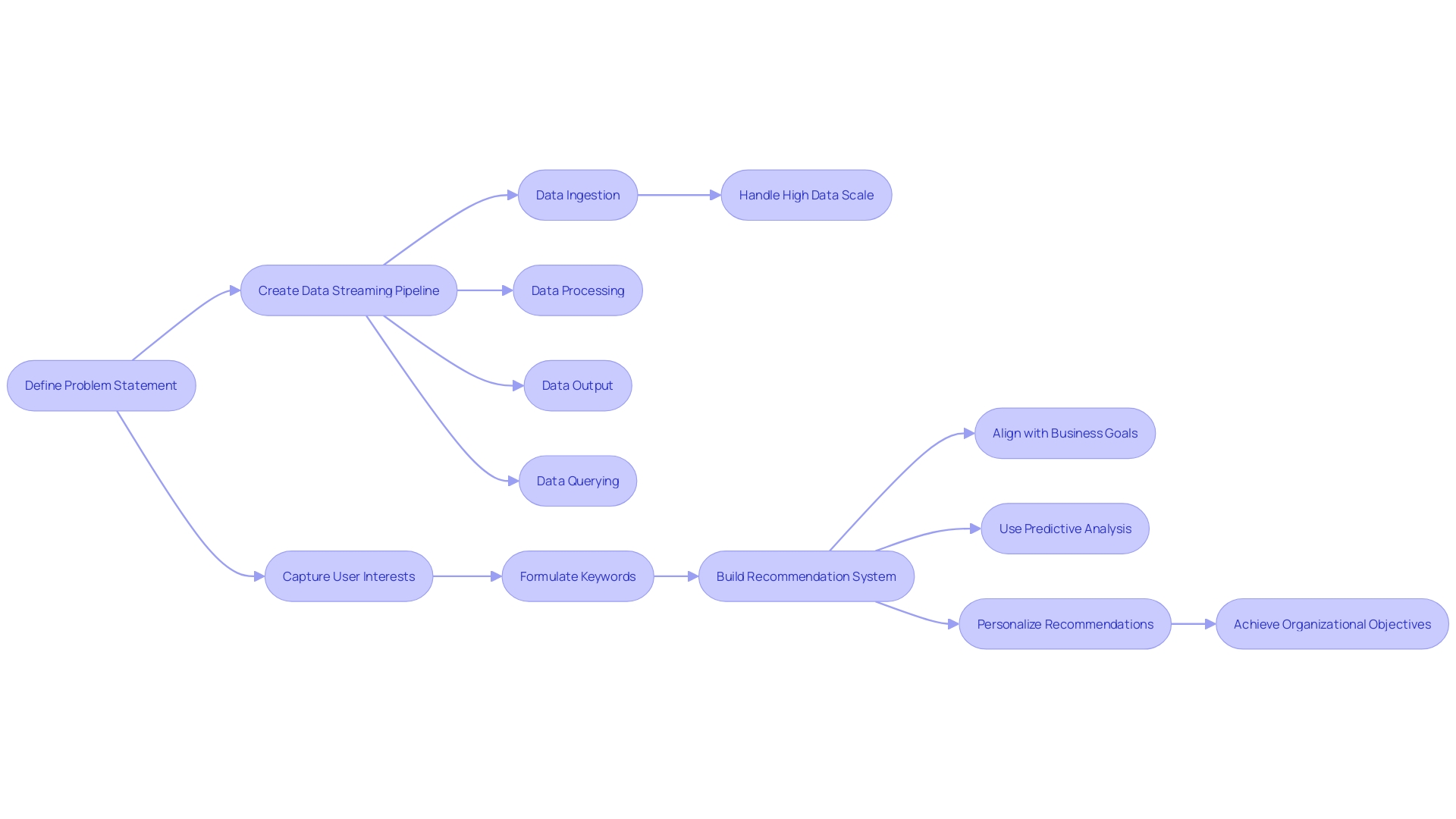
Data Collection and Preparation
Gathering and preparing data is the cornerstone of crafting an effective recommendation system. It starts with a meticulous collection of data points, such as product attributes, customer preferences, and purchase histories.
The complexity of this task is akin to creating a vast matrix where products and user interactions form a Bag of Words model—each product represented by a column, each customer by a row, and their interactions marked with binary indicators. This matrix not only serves as the foundation for recommendations but also captures user interests in keywords, essential for a nuanced understanding of consumer behavior.
Once the raw data is in place, the challenge shifts to preprocessing—cleaning anomalies, deduplicating entries, and converting the data into a format amenable to algorithmic analysis. This process is not unlike the engineering of a data streaming pipeline, where each step, from ingestion to querying, is an intricate problem of its own.
With potentially hundreds of thousands of events per second, it's critical to ensure that the data is not only accurate but scalable. The aim is to create a system that mirrors the complexity of human preferences with digital precision. As we've seen in the e-commerce space, where personalized recommendations are now the norm, the success of such a system is measured by its ability to echo a user's unique tastes and interests. The stakes are high, as a robust recommendation system can significantly elevate the user experience, driving engagement and, ultimately, sales.
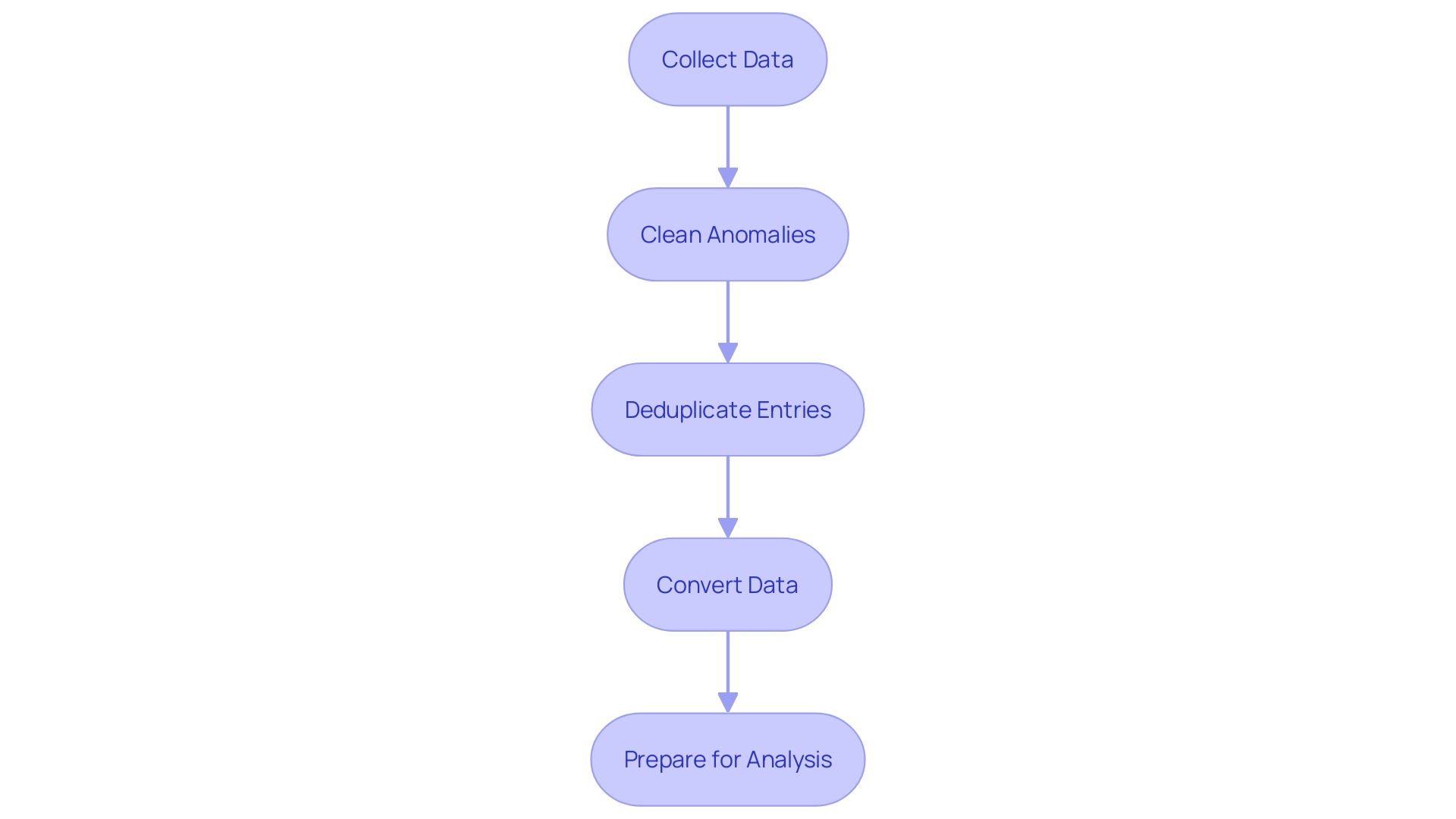
Building a Recommendation Engine from Scratch
Creating a recommendation engine is a complex endeavor that entails a deep comprehension of various algorithms and their application. When embarking on such a project, it's crucial to have a clear understanding of the requirements and challenges ahead. For instance, the system must be capable of discerning a user's preferences through keywords that reflect their interests, as well as leveraging the customer's past and present behaviors.
The choice of algorithm—be it collaborative filtering, content-based filtering, or a hybrid method—should align with the specific needs of your e-commerce platform. A recommendation engine is not just a piece of code; it's a sophisticated toolkit that anticipates the customer's next move by analyzing their interactions and relationships within the platform. For those starting out, a machine learning background and proficiency in Python, as well as experience with data processing libraries, are beneficial.
This foundational knowledge enables you to navigate the complexities of recommendation systems more effectively. As you build and refine your engine, remember to measure its performance meticulously, using precise metrics to fine-tune it for optimal outcomes. Ultimately, the success of your recommendation engine hinges on its ability to evolve with user behavior, offering a dynamic and personalized shopping experience that keeps customers engaged and satisfied.
Using Collaborative Filtering for Recommendations
Collaborative filtering stands as a cornerstone in the realm of recommendation systems, leveraging the power of collective user behavior to curate personalized experiences. At its core, this technique assumes that individuals with similar tastes in the past will likely exhibit parallel preferences in the future.
The process begins by constructing a user-item matrix, where rows symbolize user IDs, and columns represent the items. Entries in this matrix are binary indicators—'1' if a user has interacted with an item, '0' otherwise, akin to a Bag of Words model in text analysis.
The two flavors of collaborative filtering, user-based and item-based, differ in their approach. User-based filtering draws on the preferences of like-minded users to generate suggestions, while item-based filtering discerns patterns among items themselves.
To harness the full potential of these methods, familiarity with machine learning and tools like Python, Pandas, and NumPy is advantageous. The matrix serves as the battleground where similarity metrics, such as cosine similarity or Pearson correlation, come into play to pinpoint recommendations. In the dynamic landscape of e-commerce, where preferences shift and data scales, collaborative filtering adapts, capturing user interests as keywords to refine its suggestions. It's a method that not only personalizes but also evolves with the user, a testament to its effectiveness in scenarios rich with explicit feedback data. As we navigate the complex ecosystem of recommender systems, collaborative filtering remains a tried-and-true ally in the quest to deliver the right product to the right user at the right time.
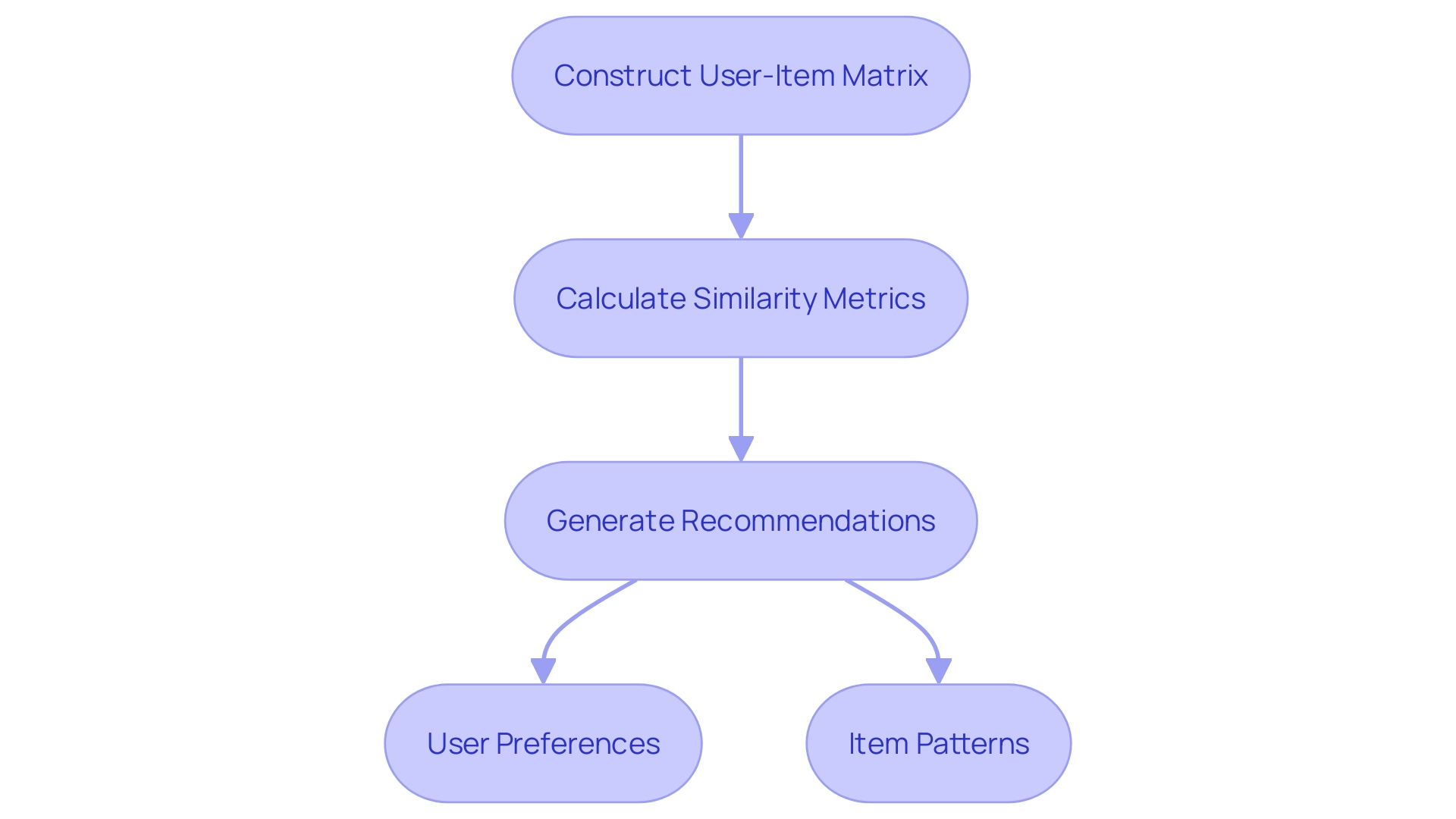
Implementing Item-Based Recommendation Systems
In the realm of e-commerce, item-based recommendation systems represent a sophisticated approach to collaborative filtering. These systems excel in environments with a vast user base and a more contained inventory of products.
The foundation of an item-based system lies in the meticulous calculation of item similarities, which involves analyzing product attributes and other pertinent features. Methods like cosine and Jaccard similarity metrics are key in constructing an item similarity matrix, a critical step in the process.
Once the matrix is established, it enables the generation of recommendations by aligning the user's previous interactions with similar items. Such systems are adept at providing precise and varied suggestions, proving particularly effective when faced with sparse data on user-item interactions.
A case in point is the construction of a recommendation system for a platform with thousands of daily users, which necessitates capturing user interests as keywords and gauging the intensity of these interests. To illustrate, consider the construction of a list-item matrix: rows represent user IDs or lists, and columns correspond to items or keywords. A binary indicator (1 or 0) populates the matrix, denoting the presence or absence of an item in a user's list. This matrix then serves as the basis for generating personalized suggestions. The effectiveness of this method is evident in its application to various domains, from movie to book recommendations, where it has been used to reflect user preferences and ratings.
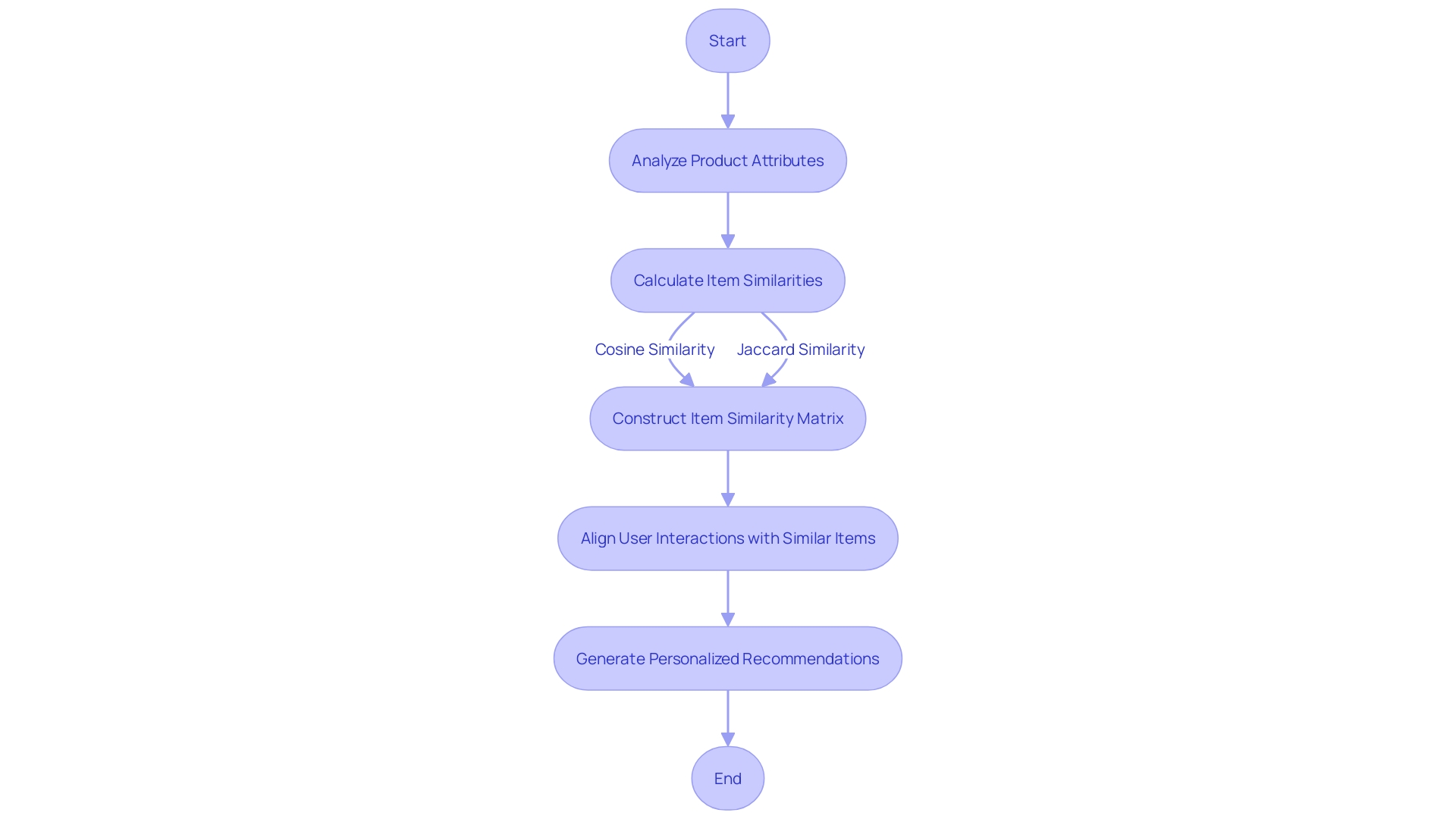
Leveraging Graph Databases for Recommendations
Graph databases are increasingly becoming the backbone of sophisticated recommendation systems. By modeling the intricate web of user preferences, item details, and interaction patterns as a network of nodes and edges, these databases excel in delivering personalized suggestions. The true power of graph databases lies in their ability to apply algorithms like personalized PageRank or uncover community clusters, thereby elevating the quality of recommendations.
They are particularly adept at integrating various types of data, such as user attributes and item metadata, which enriches the recommendation engine's insights. The design of knowledge graphs, a subset of graph databases, is particularly noteworthy. They encapsulate a business's semantic model within their structure, linking a wide array of nodes—from people to documents—through meaningful relationships.
This not only provides a holistic view of processes and entities but also ensures that the recommendations are aligned with the business functions. However, it's crucial to address the scalability and performance challenges inherent in graph databases, as they can demand substantial resources. To mitigate this, one must pay close attention to optimization to ensure the system remains responsive even as it scales to accommodate thousands of users and their complex, ever-evolving relationships.
Building a Recommendation System with GPT
Harnessing the power of Generative Pre-trained Transformers (GPT) for e-commerce product recommendations can be transformative. GPT's deep learning capabilities enable it to produce highly relevant suggestions by analyzing massive datasets, which include product descriptions and customer reviews.
By fine-tuning this model with your specific e-commerce data, GPT learns to understand user queries, making recommendations that are not only personalized but also contextually aware. This level of customization is crucial in today's digital marketplace, where users are inundated with choices.
By employing a system that captures user interests in keywords and discerns the depth of those interests, GPT can significantly enhance the user interface and engagement. However, deploying such sophisticated technology requires careful consideration of computational demands and the potential for inherent biases. It's also worth noting that to maintain the system's effectiveness, continuous updates and model maintenance are imperative. With the web being a vast repository of text-based data expressing needs, opinions, and knowledge, leveraging NLP algorithms becomes indispensable for automatic systems to comprehend user intents and provide personalized services, particularly as they combat the challenge of information overload.
Establishing a Feedback Loop for Improvement
Refining an e-commerce recommendation system is an ongoing process that requires a robust feedback loop. Feedback can be harvested through explicit means like user ratings, or implicit indicators such as clicks and purchases.
When evaluating a recommendation system's effectiveness, key metrics such as precision and recall, alongside click-through rates, serve as critical performance indicators. An algorithm's success hinges on its ability to adapt based on user interactions, which can be achieved through iterative enhancements.
This could involve tweaking the recommendation logic, refining data collection methods, or improving user interface design. A case in point is the engineering of a system designed to interpret a user's interests via keywords and gauge the intensity of these interests.
Such a system not only helps in tailoring recommendations but also addresses the challenge of information overload by filtering content to match user preferences. However, it's crucial to be aware of potential pitfalls, such as feedback loops leading to a narrow selection of popular items or a lack of diversity in recommendations. These can have long-term adverse effects, including a diminished user experience and societal imbalances. Therefore, maintaining a recommendation system that is both effective and equitable is essential for adding value to the business and serving the varied needs of the user base.
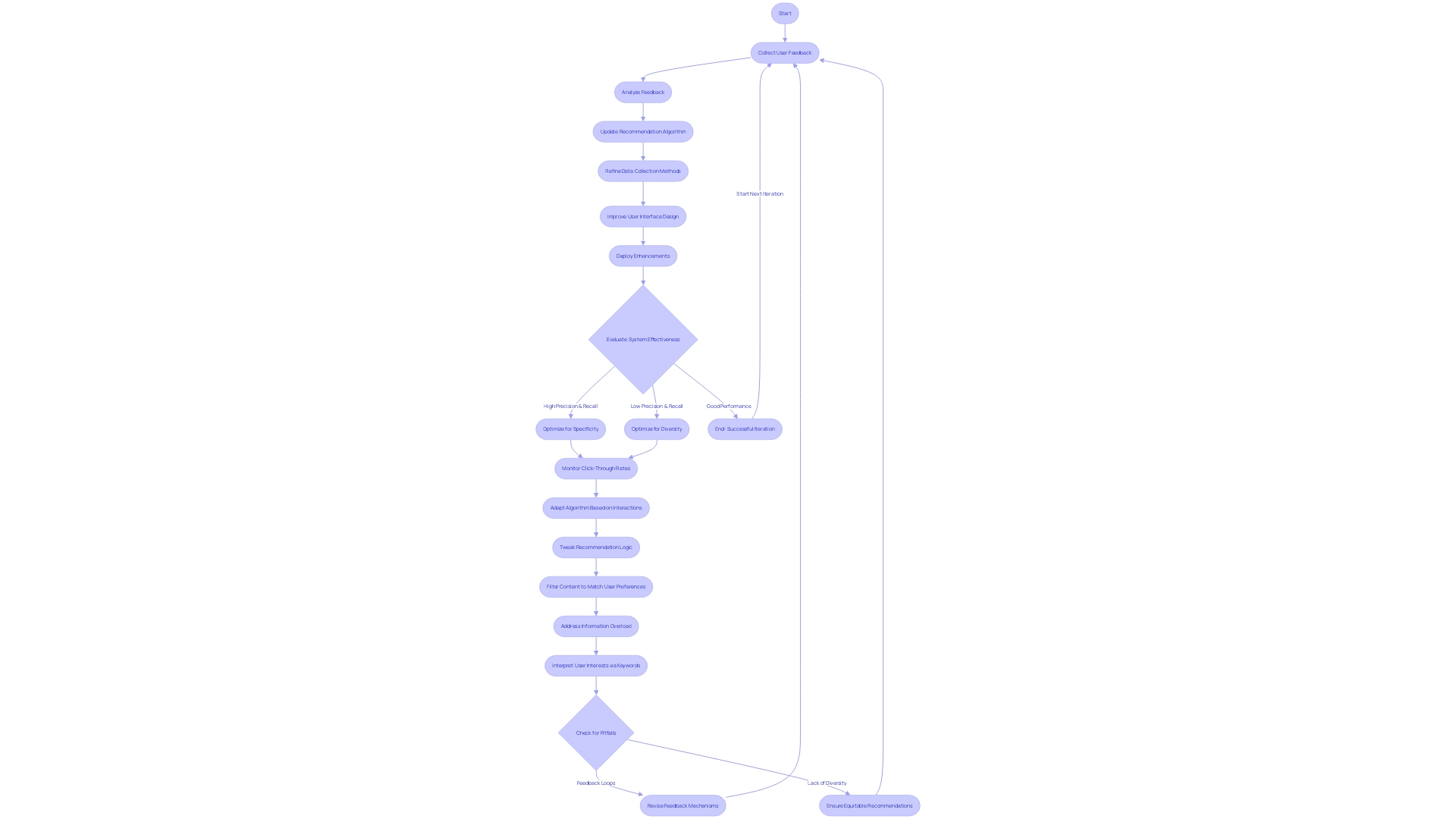
Best Practices and Common Pitfalls in Recommendation Systems
In developing a sophisticated recommendation engine, it's crucial to craft a system that not only understands user interests through keyword analysis but also gauges the intensity of these interests. This dual approach ensures that the recommendations are not just relevant but finely tuned to the user's level of engagement with specific topics or products.
To achieve this, it is imperative to regularly refine the recommendation algorithms, embracing the dynamic nature of user preferences and market trends. A diverse range of suggestions is also essential to prevent the overrepresentation of popular items, which can lead to a monotonous user experience.
Providing users with the rationale behind each recommendation fosters transparency and trust, an increasingly important factor in the digital age. Ethical considerations, such as privacy and unbiased recommendations, are foundational to maintaining user confidence and should be addressed proactively.
Avoiding pitfalls such as overfitting the algorithm to historical data is vital, as this can lead to a lack of adaptability and poor performance in real-world scenarios. A balance between popularity-driven and personalized recommendations is necessary to cater to both new and returning users effectively. Regular validation and performance evaluation using appropriate metrics are non-negotiable to ensure the system meets its objectives. As highlighted by industry experts, recommendation systems should be seen as a business asset with the potential to enhance service quality and, by extension, contribute to organizational goals like customer retention and loyalty. These systems are not just about predicting user behavior but also about creating a value-driven relationship between the user and the platform.

Conclusion
Crafting an effective e-commerce recommendation system requires aligning it with business goals and parameters. Personalized recommendations enhance customer retention and loyalty. Gathering and preparing data is crucial for building a solid foundation.
Collaborative filtering, like user-based and item-based approaches, curates personalized experiences. Item-based systems excel in environments with vast user bases and contained inventories. Graph databases model user preferences, delivering personalized suggestions.
Optimizing scalability and performance is essential when leveraging their power. Generative Pre-trained Transformers (GPT) analyze massive datasets to produce highly relevant suggestions. Establishing a feedback loop helps refine the system based on user interactions.
Key metrics like precision, recall, and click-through rates evaluate effectiveness. Best practices include refining algorithms regularly, providing diverse suggestions, ensuring transparency, addressing ethical considerations, avoiding overfitting historical data, balancing popularity-driven and personalized recommendations, and validating performance against objectives. In conclusion, align your recommendation system with business goals, gather and prepare data meticulously, choose the right algorithm (collaborative filtering or item-based), consider graph databases or GPT models, establish a feedback loop for continuous improvement, and follow best practices to create a value-driven relationship between users and your platform while enhancing service quality towards customer retention and loyalty.





